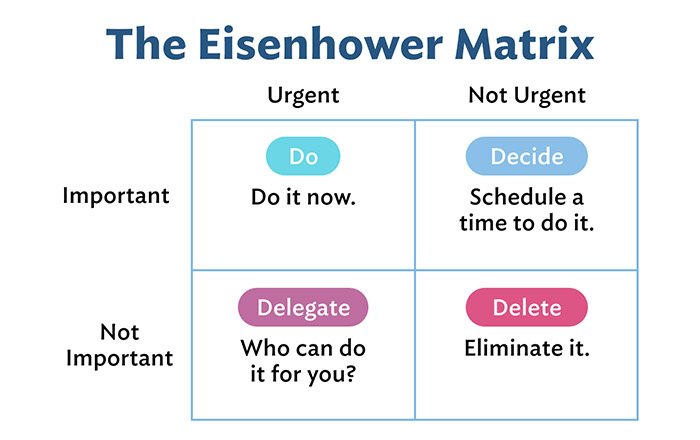Skill of Multitasking: Assessing its Relevance for Employers

The concept of multitasking is widely believed to be an essential skill for today’s employees. It suggests the ability to switch back and forth between multiple tasks with ease in order to maximize efficiency, achieve better performance outcomes, or just save time.
However, despite its popularity, there are still debates over whether it actually improves productivity or not and thus brings about more harm than good. This paper will explore the relevance that this assumption has for employers by examining evidence from research on cognitive implications as well as analyzing how technology affects task focus within a work setting.
Through looking at both pros and cons associated with using adulting in relation to job duties we shall try to answer whether having such ‘skill’ really makes any difference when it comes to hiring decisions or the general quality of work done during working hours before ultimately offering alternatives approaches which may bring improved results without leading into overwhelming stress overload situations.
Debunking the Multitasking Myth
Multitasking is the simultaneous performance of multiple tasks or activities. It involves switching back and forth between these different tasks while attempting to complete them in a timely manner.
Despite its prevalence, research has found that multitasking can have detrimental cognitive effects such as reduced working memory capacities, impaired concentration levels, decreased attentional control over task-switching along with increased fatigue levels due to an overload of stimuli. Moreover, some studies suggest multitaskers may be unable to screen out new incoming information which further exacerbates their inability to focus on primary goals successfully leading to lower productivity rates overall.
Research findings on the negative impact of multitasking
Research has shown that multitasking is detrimental to cognitive performance and well-being, as it causes distraction, impedes focus, and increases stress levels. Studies have indicated that people who attempt multiple tasks simultaneously suffer decreased productivity because of task-switching costs – the amount of energy expended when switching between two or more different activities.
Multitaskers also typically require longer periods of recovery from their work before they can maintain effective concentration once again; this results in reduced efficiency overall and impairs job performance quality due to increased fatigue. Furthermore, undertaking various projects at one time leads to a feeling overwhelmed which may lead towards an increase in mental health issues such negative thoughts about themselves or workplace burnout for employees over extended periods.
Explanation of the concept of task-switching and its limitations
Task-switching involves rapid transitioning
Studies have shown that switching between tasks generally results in longer completion times for each as there is an additional cognitive cost involved due to the need for attentional control and adjustment when transferring focus away from one objective and onto the next. Furthermore, attempting multiple activities at once can disrupt organizational skills by reducing our ability to remember where progress was last left on any particular project or occupation.
Context of Multitasking in the Workplace

1. The rise of the multitasking culture in the digital age
The rise of the multitasking culture in the digital age has led to a ubiquitous expectation that employees are able to switch seamlessly between multiple tasks. In this day and age, employers require their staff’s undivided attention on more than one task at once; whether it be responding to emails while also writing reports or attending calls and scheduling client meetings simultaneously.
This increasing demand for mult.itasking thus stretches our mental capacity beyond its natural limits as we try to digest an overwhelming amount of information within limited timeframes. Unfortunately, even with modern resources available today such as increased access to technology-enabled multi-tasking tools like messaging apps – true human productivity suffers when overly relying on these strategies.
2. The impact of technology on employees’ ability to focus and prioritize tasks
The increasing use of technology in the workplace has had a significant impact on employees’ ability to focus and prioritize tasks. New technologies have enabled employees to multi-task with more complex tools, machines, and programs that require greater cognitive effort than traditional manual labor.
Unfortunately, this affects workers’ attention spans as too many distractions are occurring at once which leads them to feel overloaded due to having constantly switched back between different tasks; leading only to inferior results when compared to single-tasking activities instead. Employers must take into account these detrimental effects while implementing new software or services for their staff if they wish maximize productivity levels from all abilities not just those individuals who happen be naturally capable at multitasking skills.
3. The importance of attentional control in task performance
The rise of the multitasking culture in the digital age has made it difficult for employed individuals to focus on a single task. Attentional control is essential when performing multiple tasks as this allows an individual to resist distractions and choose between relevant and irrelevant stimuli.
Research shows that distracted employees are liable for greater time mismanagement, errors decreased productivity levels, and higher rates of a mental exhaustion than workers who remain focused throughout their work hours – all leading factors affecting job performance negatively.
Employers should take steps towards forming healthy working habits such as minimizing distraction-inducing activities while ensuring optimal attentional control during periods of multitasking activity rather than expecting unachievable results from their employees’ performances simultaneously with no breaks or restful pauses permitted in between complex projects at hand; ultimately creating a healthier yet more productive workforce overall’.
The Pros and Cons of Multitasking as a Skill for Employers

Advantages of multitasking in specific job roles and industries
Multitasking can be beneficial in certain job roles, particularly those that require frequent shifts of attention. For example, receptionists and customer service agents must often juggle multiple customers at once without losing track or compromising quality.
Employees in positions such as these may have a comparative advantage if they are able to efficiently switch between tasks while maintaining accuracy and focus on details. However, it is important for employers to recognize which jobs truly benefit from multitasking versus where employees might become overwhelmed by too many unrelated activities occurring simultaneously; the ability to make this distinction ensures the most productive use of their workers’ time and energy over long periods of work hours.
Limitations of multitasking as a universal skill
The limitations of multitasking as a universal skill are numerous, affecting both the efficiency and effectiveness with which tasks can be completed. Studies have shown that trying to undertake too many activities at once results in poor concentration, lower creativity levels, and more mistakes being made due to an inability to focus on one task for extended periods of time.
Moreover, juggling multiple tasks frequently leads to fatigue or stress which ultimately affects productivity in terms of quality output and overall job performance. Consequently, employers should consider very carefully whether multitasking is suitable depending upon their industry sector before deciding whether this skillset would benefit employees’ intended roles
Alternatives to Multitasking: Task Prioritization and Time Management

Prioritizing tasks based on their importance and urgency
Task prioritization is an important alternative to multitasking, which involves assessing the importance and urgency of tasks in order to decide what should take precedence. Tasks that are highly important but not urgent or with lower levels of significance can then be scheduled for later completion.
This enables a more efficient use of time by focusing on the most pressing projects and reducing stress from trying to finish all tasks simultaneously. Time management also plays a role when considering priorities as it allows individuals to plan ahead, create schedules, set deadlines for themselves, stick their commitments and help avoid procrastination-related problems that often result from attempting multitask too many jobs at once.
Strategies for effective time management and avoiding overload
Time management is key to avoiding multitasking-related overload. By breaking tasks down into small, achievable goals and scheduling specific time blocks for each task in advance, employers can ensure their employees have enough space between activities to avoid exhaustion.
Additionally, setting realistic deadlines will limit the pressure on staff and members of a team should collaborate when necessary instead of attempting multiple complex tasks simultaneously. Engaging in calendaring techniques such as Pomodoro or designating ‘no interruptions’ days are also great tools that encourage productive work habits over multitasking overloads.
Role of employers in promoting healthy work practices and reducing stress
The role employers play in promoting healthy work practices and reducing stress cannot be overstated, especially when multitasking has been found to have a negative effect on employee performance. Employers can encourage employees to prioritize tasks based on their importance and urgency as well as practice effective time management strategies such as setting deadlines for specific tasks or using task-management apps like Slack.
Additionally, managers should provide regular breaks throughout the day allowing workers adequate rest periods that will enable them to remain focused during working hours without becoming overwhelmed by excessive workloads. With mindful intervention from employers, better job satisfaction levels amongst employees can be achieved – leading ultimately towards increased productivity whilst actively alleviating any feelings of burnout due to stressful office environments..
Conclusion
Multitasking has long been viewed by employers as an invaluable skill, but recent research suggests that it can actually hinder productivity and cognitive performance. This article, examined the validity of the multitasking myth and its implications for employers. Through a review of relevant literature we identified both the pros and cons associated with promoting multitasking in job roles, such as attentional control benefits or increased stress levels; however task-switching was found to have significant limitations which should be considered when evaluating employees’ overall capability.
- Mastering Internal Mobility: A Comprehensive Guide to Success - August 10, 2023
- Effective Recruiting Strategies in a Competitive Sales Labor Market - July 27, 2023
- 6 Essential Factors to Attract Top Talent - July 19, 2023
